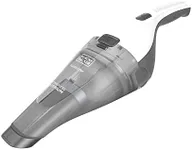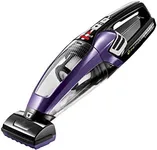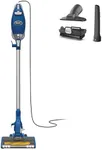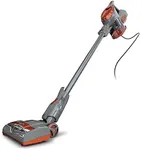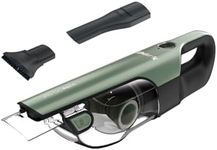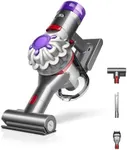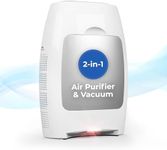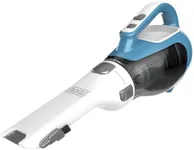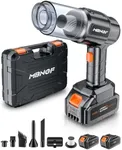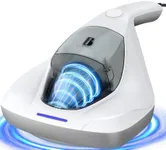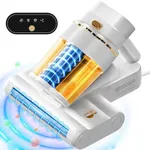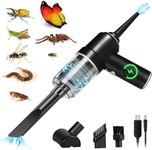Buying Guide for the Best Dustbusters
Choosing the right dustbuster, or handheld vacuum cleaner, can make a big difference in keeping your home clean and tidy. Dustbusters are convenient for quick clean-ups and reaching areas that a regular vacuum might not be able to. When selecting a dustbuster, it's important to consider several key specifications to ensure you get the best fit for your needs. Here are the main specs to look at and how to choose the right one for you.Suction PowerSuction power determines how effectively the dustbuster can pick up dirt and debris. It's usually measured in air watts (AW) or volts (V). Higher suction power means better cleaning performance, especially on carpets and larger debris. For light cleaning tasks, a lower suction power (around 15-20 AW) might suffice. For more demanding tasks, such as pet hair or larger debris, look for higher suction power (above 20 AW). Consider your cleaning needs and the types of surfaces you'll be cleaning to choose the right suction power.
Battery LifeBattery life indicates how long the dustbuster can run on a single charge. This is crucial for ensuring you can complete your cleaning tasks without frequent recharging. Battery life can range from 10 minutes to over 30 minutes. For quick, occasional clean-ups, a shorter battery life might be adequate. However, if you plan to use the dustbuster for extended periods or larger areas, opt for a model with longer battery life. Think about how long your typical cleaning sessions last to determine the appropriate battery life for you.
WeightThe weight of the dustbuster affects how easy it is to handle and maneuver. Lighter models are easier to carry and use for extended periods, making them ideal for quick clean-ups and reaching high or awkward spots. Heavier models might offer more power but can be tiring to use for long periods. If you need a dustbuster for quick, frequent use, a lighter model (under 3 pounds) is preferable. For more intensive cleaning tasks, you might be willing to handle a bit more weight for better performance.
Dustbin CapacityDustbin capacity refers to how much dirt and debris the dustbuster can hold before needing to be emptied. Larger capacities mean less frequent emptying, which is convenient for bigger cleaning jobs. Capacities can range from 0.3 liters to over 1 liter. For small, quick clean-ups, a smaller dustbin might be sufficient. For larger areas or more frequent use, a larger dustbin will save you time and effort. Consider how often you want to empty the dustbin and the size of the areas you'll be cleaning.
Filtration SystemThe filtration system captures dust and allergens, improving air quality and preventing them from being released back into the air. High-efficiency particulate air (HEPA) filters are the gold standard, capturing 99.97% of particles. If you have allergies or pets, a dustbuster with a HEPA filter is highly recommended. For general use, a standard filter might be sufficient. Think about your sensitivity to dust and allergens when choosing the filtration system.
Attachments and AccessoriesAttachments and accessories enhance the versatility of the dustbuster, allowing you to clean different surfaces and hard-to-reach areas. Common attachments include crevice tools, brush tools, and pet hair tools. If you need to clean a variety of surfaces, such as upholstery, car interiors, or tight spaces, look for a dustbuster with a range of attachments. Consider the specific cleaning tasks you need to perform and choose a model with the appropriate accessories.
Charging TimeCharging time is the duration it takes to fully recharge the dustbuster's battery. Faster charging times mean less waiting between uses. Charging times can vary from under an hour to several hours. If you need to use the dustbuster frequently or on short notice, a model with a shorter charging time is more convenient. For occasional use, a longer charging time might not be an issue. Think about how often and urgently you need to use the dustbuster to decide on the appropriate charging time.
